7 Things You Should Know About Traditional Japanese Fans
by Teni Wada & Lucy Dayman | CRAFT
Plum Branch and Teapot Fan, Late 19th Century, Met Museum
Can you name an everyday Japanese fashion accessory that has practical and ornamental purposes, while simultaneously functioning as a military technology?
If you guessed fan, then you’re right!
The fan is an immediately recognizable icon of Japanese culture, and it’s more than a tool for cooling down on a hot day. While they no longer have a place on the modern battlefield, traditional Japanese fans remain an artistic medium and functional fashion accessory.
Here are 5 things you should know about traditional Japanese fans; their history, influences, uses and where to buy them!
And if you’re visiting Japan, you should also check out the 10 Best Places to Buy Japanese Fans in Tokyo!
1. History of Japanese Fans
Women with Fans, 1870, The Met Museum
The fan is one of few Japanese handicrafts originating in Japan, and not in China, during a period where most technological learning came from the Chinese mainland.
The earliest recorded domestic sighting of the Japanese fan was in the 6th century, where burial tombs were adorned with pictures of fans. It’s also recorded in the Chinese official historical record of the Song Dynasty (960–1279) that a Japanese monk, Chonen, gifted folding fans to the Chinese emperor in 988.
Japanese fans eventually made their way to the Korean peninsula in the 11th century, via Korean envoys to the Chinese court bringing Japanese-style folding fans.
19th Century Japanese Fan, made for export, V&A Museum
At the same time, in Heian period Japan (794-1185,), these fans became such a popular novelty that laws were created to restrict their use to particular social classes.
Typically crafted from hinoki, Japanese cypress, and thread, the number of strips of wood on each fan was meant to reflect the rank and status of its owner. These laws transformed Japanese hand fans into tools of aristocrats and the samurai class and became a means to signify social standing and even communicate messages.
Folding Fan by Katsushika Isai, 19th Century, The Met Museum
By the 15th century, Japanese hand fans were so widely revered that Japan began exporting them abroad, including to China, from where they made their way onto the silk road trade route. By the 18th and 19th century, these fans had even become a desirable fashion accessory for well-to-do European women. The late 19th-century piece above, from the collection of the Victoria and Albert Museum, is one such fan which was designed specifically for export to Europe.
2. Types of Japanese Fans
Ume Blossom Kyoto Uchiwa Fan, available at Japan Objects Store
Uchiwa: Also known as a fixed fan, these fans are typically circular with a resemblence to the silhouette of a ping pong bat. Some other variations of the uchiwa are palm-leaf shaped. In Japan, you’ll often see these styles of fan used during festivals, or by Buddhist monks as ceremonial fans. In more contemporary usage, uchiwa fans are popular promotional items for companies who want their logos flittering around town on a hot day!
Pureland Japanese Folding Fan, available at Japan Objects Store
Sensu/Ogi: This fan is often also known more simply as a folding fan. The original incarnations of were made from bamboo covered with Japanese washi paper (find out more in our Guide to Washi Paper). Today they are typically made of paper, sandalwood, or silk, but cloth/cotton ones exist too. Sensu fans make great gifts, as they’re compact, beautiful and practical.
Gunbai War Fan, The Met Museum
War Fans: These fans were, as the name suggests, tools of war. They were most commonly used as a signaling device by wartime commanders, who would direct the soldiers through their movements. This Gunbai war fan contains a concealed spear for the multitasking soldier!
19th Century Brise Fan, Cooper-Hewitt
Brisé Fans: The most decorative of all the fans, brisé fans are carved from ivory sticks or solid wooden, like this whimsical 19th century example, without the use of fabric. Each flat piece is connected by an interwoven ribbon. Intricate patterns are often painstakingly cut into the fans, creating a final effect that looks almost like fabric or lace.
Goldfish Kyoto Uchiwa Fan, available at Japan Objects Store
Of these four types of Japanese fans, we’d like to pay special attention to the uchiwa. While contemporary, mass-produced uchiwa are made with readily available materials like stock paper and plastic, traditional handmade uchiwa are made with bamboo sandwiched between washi paper in a multistep process involving one or more artisans. Renowned Kyoto fan maker, Aiba, have been refining this art for over 300 years.
3. How are Uchiwa Fans Made?
© Kyo-Uchiwa Aiba, Making an Uchiwa Fan
Also known as Miyako uchiwa or “fans from the (old) capital,” Kyo-uchiwa use traditional materials like bamboo and premium washi paper, which are as aesthetically pleasing as they are functional and durable. Every fan is made in a meticulous method where each section is crafted by a highly-skilled specialist.
First, a thin bamboo frame is constructed, with the ribs aligned one by one in a radial pattern. A Kyo-uchiwa uses anywhere from 50 to 80 bamboo ribs, with the most intricate designs consisting of more than 80 bamboo ribs. The higher the number, the higher the quality, and the hyakudate ("100 sticks") is the most prized of Kyo-uchiwa from Aiba.
© Kyo-Uchiwa Aiba, Making an Uchiwa Fan
Next, the washi paper is prepared, either by hand painting, dyeing or woodblock prints. Aiba also developed a new style of uchiwa known as sukashi (“see-through”) uchiwa, where intricate symbols and patterns are carved from washi paper and expertly arranged over the bamboo ribs in a stunning artistic display.
The handle, constructed separately and attached at a later stage, is made of lacquer and bamboo. In all, there are over 20 steps to create one single Kyo-uchiwa, a process that takes more than one year to complete.
4. How are Japanese Fans Used?
Kimono and Fan, available at Japan Objects Store
Today, Japanese fans are most typically used for practical reasons; to keep cool during the sweltering hot Japanese summers. In times gone by, however, this was far from the case. The finest fans were considered to be of decorative use and only opened when necessary.
Folding Fan by Takaku Aigai, 1832, The Met Museum
The Edo period was a great time for artistic use of the folding fan. Artists like Takaku Aigai (1796–1843) created some of his most delicate works on these fans. Bamboo and Rocks by a Stream is a definite highlight.
Folding Fan by Katsushika Isai, 19th Century, The Met Museum
Another excellent example of Edo-era artistic fan crafting is this piece by Katsushika Isai (1821–1880). Titled Summer Flowers, it’s a stunning and delicate folding fan that has been remounted as a hanging scroll; made from ink and color on silk.
Wall Decoration in the Shape of a Fan by Ikeda Taishin, Museum of Applied Arts and Sciences
Fans have also provided the inspiration for other forms of artwork, such as this lacquer wall decoration made by artist Ikeda Taishin; an excellent example of the fan motif being reinterpreted beyond its typical use during the Meiji period (1868–1912).
Gunsen War Fan, Asian Art Museum
During bloodier times, the samurai would follow their commander’s fans signals, like a silent, coded message. The war fan above is painted with a bright and striking sun motif to be easily visible at a distance. High society Japanese folk would use the fans as decorative pieces and accessories, a habit European contemporaries would follow years later.
© Kyo-Uchiwa Aiba, Uchiwa and Yukata
At Japanese matsuri (festival) events, fans are often used as props and extra extravagant accessories for performances. The style typically on show are uchiwa fans, the solid, flat fans usually made from paper and bamboo. These days, however, plastic and paper are common materials too. During matsuri events, you’ll often see these styles of fans wielded by spectators, who appreciate their beauty and practicality.
5. How to Use Japanese Fans in Your Daily Life?
Yukata and Fan, available at Japan Objects Store
Take a cue from matsuri dancers and revelers and use Japanese fans as a practical summer accessory. Use your fan at home, on public transportation, wherever or whenever you may need to cool yourself down and take a break.
Ume Blossom Kyoto Uchiwa Fan, available at Japan Objects Store
It’s not uncommon for traditional handcrafted Japanese fans to come with a stand. When not in use, display it as an interior design piece that elevates your home foyer or office space.
Formal events like weddings are a wonderful opportunity to use Japanese fans as a functional accessory. Treat your fan as a finishing touch for an outfit and allow others to appreciate their shape, design, and artwork.
Here are a few tips for coordinating your fan with a kimono or formalwear. Look for seasonal motifs like plum blossoms (winter); cherry blossoms (spring); goldfish (summer); maple leaves (autumn).
6. Where to Make Japanese Fans Yourself?
Sometimes the best way to understand a craft is to have a go yourself. Here are three suggestions of workshops where you can learn how to make a traditional Japanese fan yourself. If you’re looking for other creative experiences on your Japan trip, check out our guides to cultural activities in Tokyo and Kyoto.
© Wow Japan Experience, How to Make a Japanese Fan with Hiroyuki Shimano
Saitama, Tokyo: Hiroyuki Shimano is a Saitama-based fan maker who has been in the business since childhood, in fact, he’s the fifth generation of Japanese fan makers in his family. Learning the art at just five years of age, he’s been running workshops for the past 25 years. His classes look at the more decorative side of fan making, and he crafts uchiwa (paddle fans) using bamboo, rice paper, and pressed flowers. The classes take about 2.5 hours and run every day except Mondays. Find out more here!
Kyoto: Kyoto, the home of Japanese traditional culture tourism is where you’ll find two excellent fan making workshops. The workshop at Shiomi Uchiwa lasts about 90 minutes. During that time, you’ll listen to local artisans talk about the history of the fan, as well as try your hand at making your uchiwa fan. At less than $25 per person, this is an excellent family friendly and budget-friendly activity. You can sign up here.
The Kyoto Handicraft Center also regularly runs craft workshops, including a Folding Fan Painting class. A little different to the others, this is for those who want to let their creativity run free, but want to leave the construction part up to the experts. The fans supplied are made of scented sandalwood. Classes take about 70 minutes and cost less than $30 per person. Visit the Handicraft Center here.
7. Where to Buy Traditional Japanese Fans?
Goldfish Kyoto Uchiwa Fan, available at Japan Objects Store
If you’re looking for a stunning fan to hang on your wall or to gift someone back home, there are many places throughout the country you could add to your itinerary. The central Tokyo neighborhood of Nihonbashi is known for being home to some of the best fan retailers in the country, including Ibasen, in Nihonbashi. This store has been making some of the best Japanese fans since 1590.
You don’t have to be Tokyo to enjoy the best Japanese fans though, you can take a look at our collection right here in Japan Objects Store!
Matcha Japanese Fan Gift Set
Sensu Japanese Fan Gift Set, available at Japan Objects Store
Summer is prime time to use a folding fan, and this Japanese Fan Gift Set consists of a sensu fan made with premium Japanese washi paper and matching Imabari hand towel, both in a refreshing matcha green color. Imabari cotton towels are renowned throughout Japan for their softness and absorbency, making this pair a must-have for hot and humid climates!
Ume Blossom Kyoto Uchiwa Fan
Ume Blossom Kyoto Uchiwa Fan, available at Japan Objects Store
Made in Kyoto, Japan by the prestigious fan maker Aiba, the Ume Blossom Kyoto Uchiwa Fan is a fine representative of the Kyoto-style Flat Fan known as Kyo-uchiwa. Ume, or Japanese plums, are one of the earliest signs of Spring, and this uchiwa invokes the image of a crisp winter scene with deep red plum blossoms in the snow. The Ume Blossom Kyoto Uchiwa Fan is handmade using aged bamboo, cedarwood, and washi paper, a design with more than 300 years of artisanal excellence.
Goldfish Kyoto Uchiwa Fan
Goldfish Kyoto Uchiwa Fan, available at Japan Objects Store
Another Kyo-uchiwa in the Japan Objects Store made by the prestigious Kyoto fan maker Aiba, is this Goldfish Kyoto Uchiwa Fan. It depicts a single goldfish swimming among a seagrass bed, a motif often used to depict summer in Japanese art and literature. The Goldfish Kyoto Uchiwa Fan is handmade using aged bamboo, cedarwood, and washi paper, a design with more than 300 years of artisanal excellence.
Pureland Japanese Folding Fan
Pureland Japanese Folding Fan, available at Japan Objects Store
Perhaps the most delightful aspect of incorporating folding fans in your daily life is the element of surprise. In the case of the Pureland Japanese Folding Fan, it unfolds to reveal the iconic blue lotus flower artwork by Kyoto’s esteemed contemporary visual artist Hideki Kimura. The folding fan is handcrafted by one of Kyoto’s most revered fan makers, Miyawaki Baisenan, and is made with washi paper and sandalwood in an intricate process that takes more than 30 individual steps.


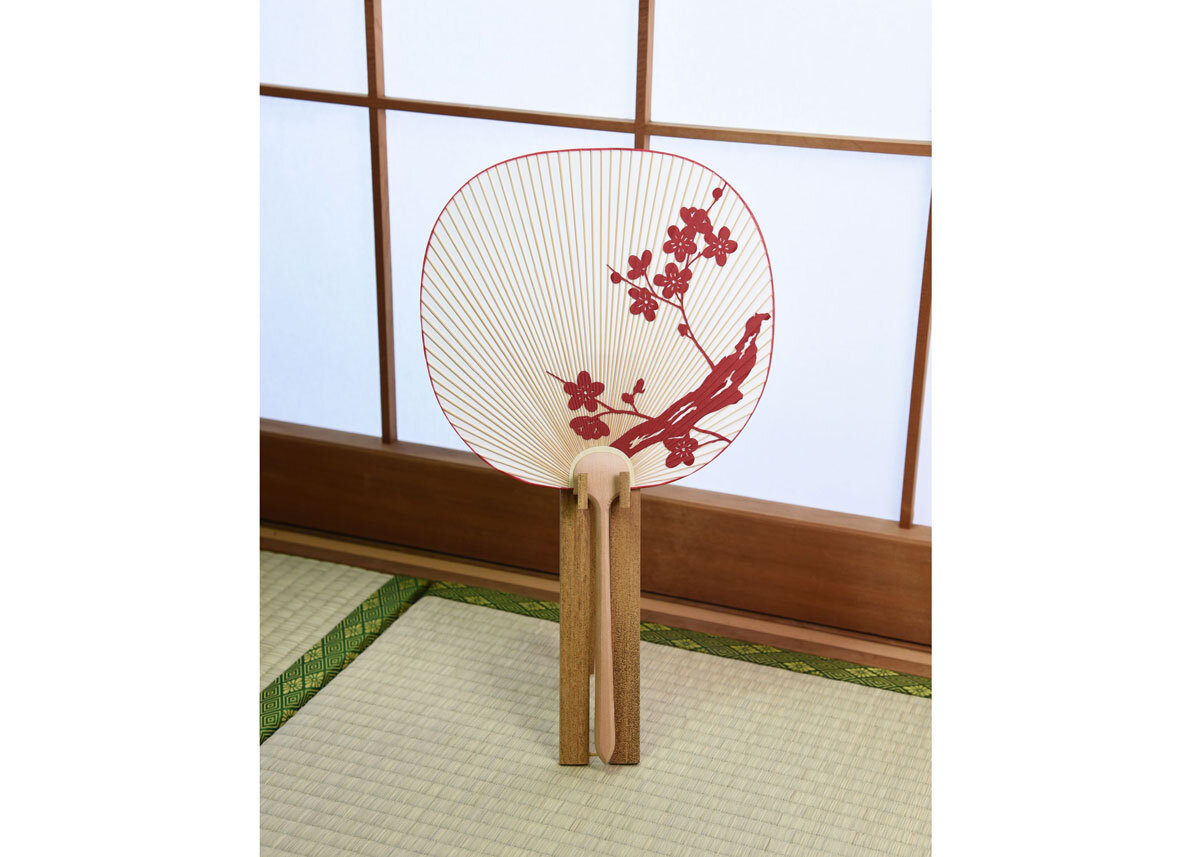
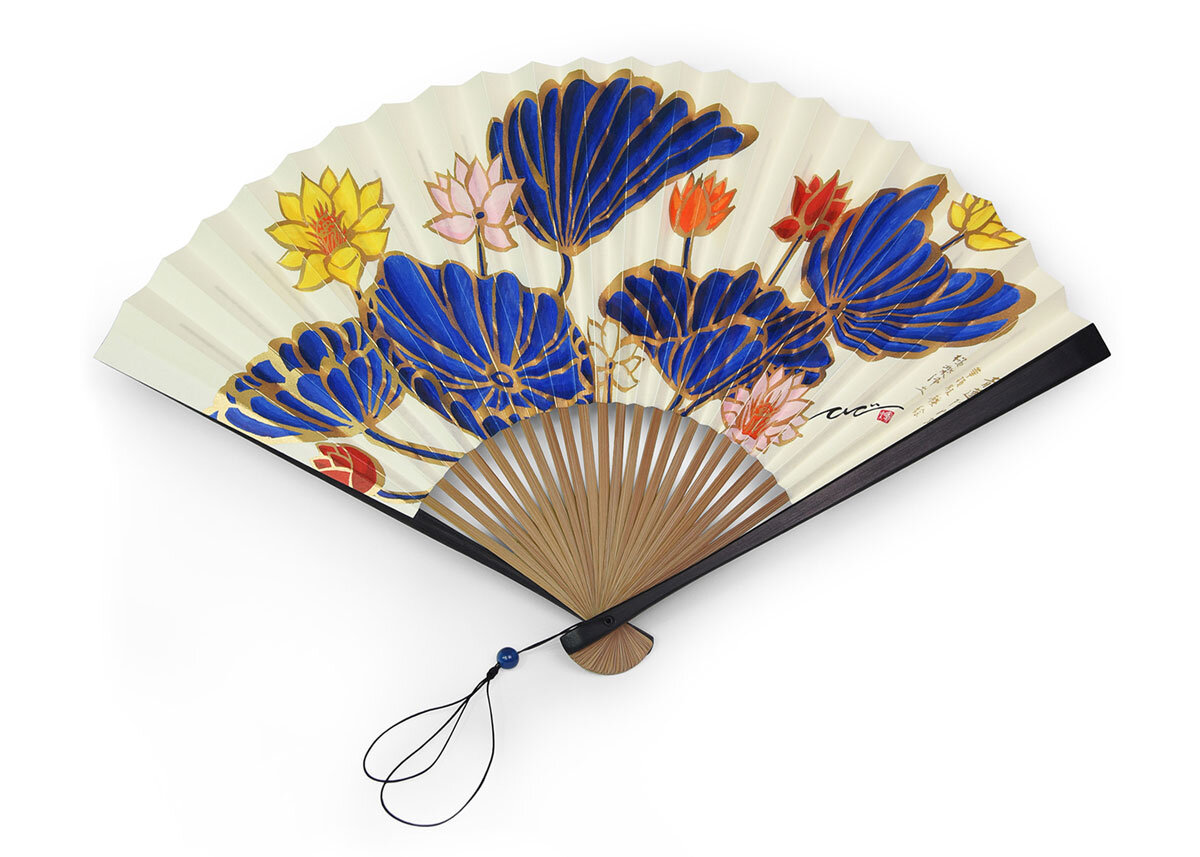




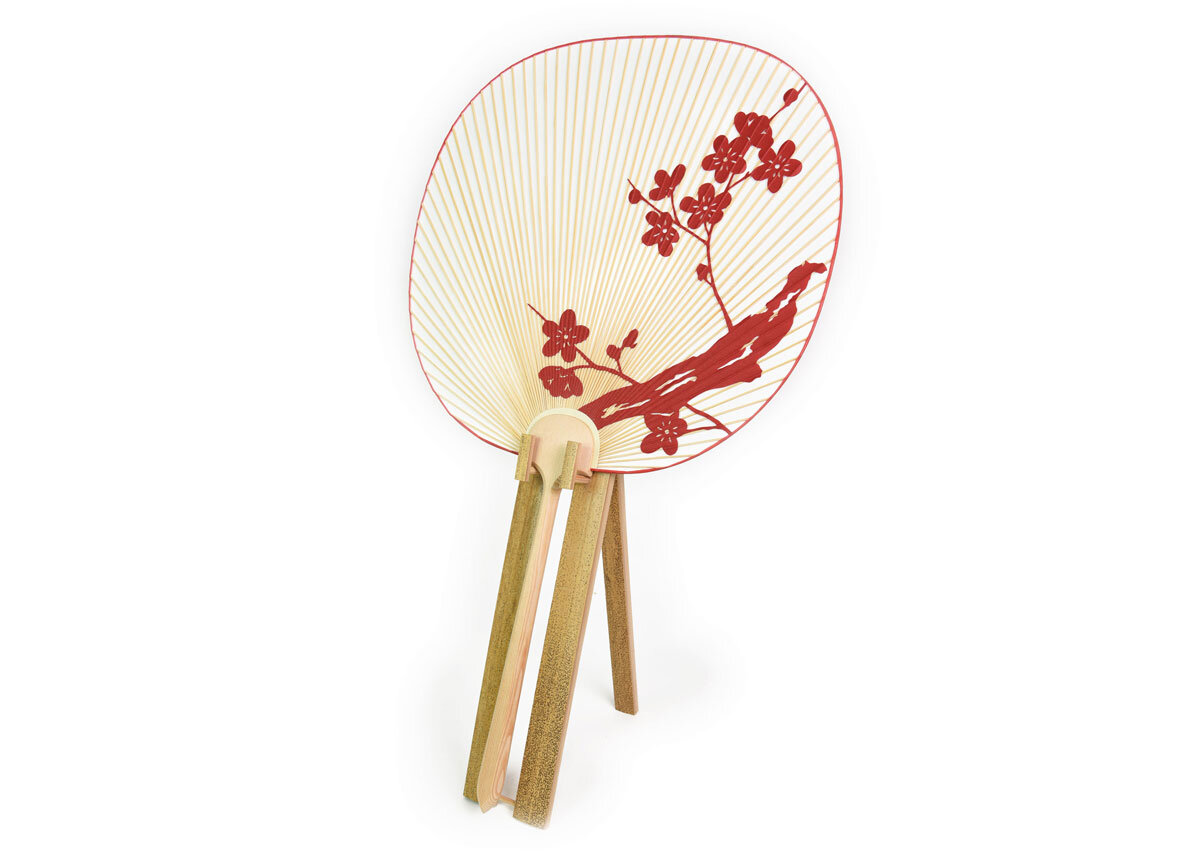


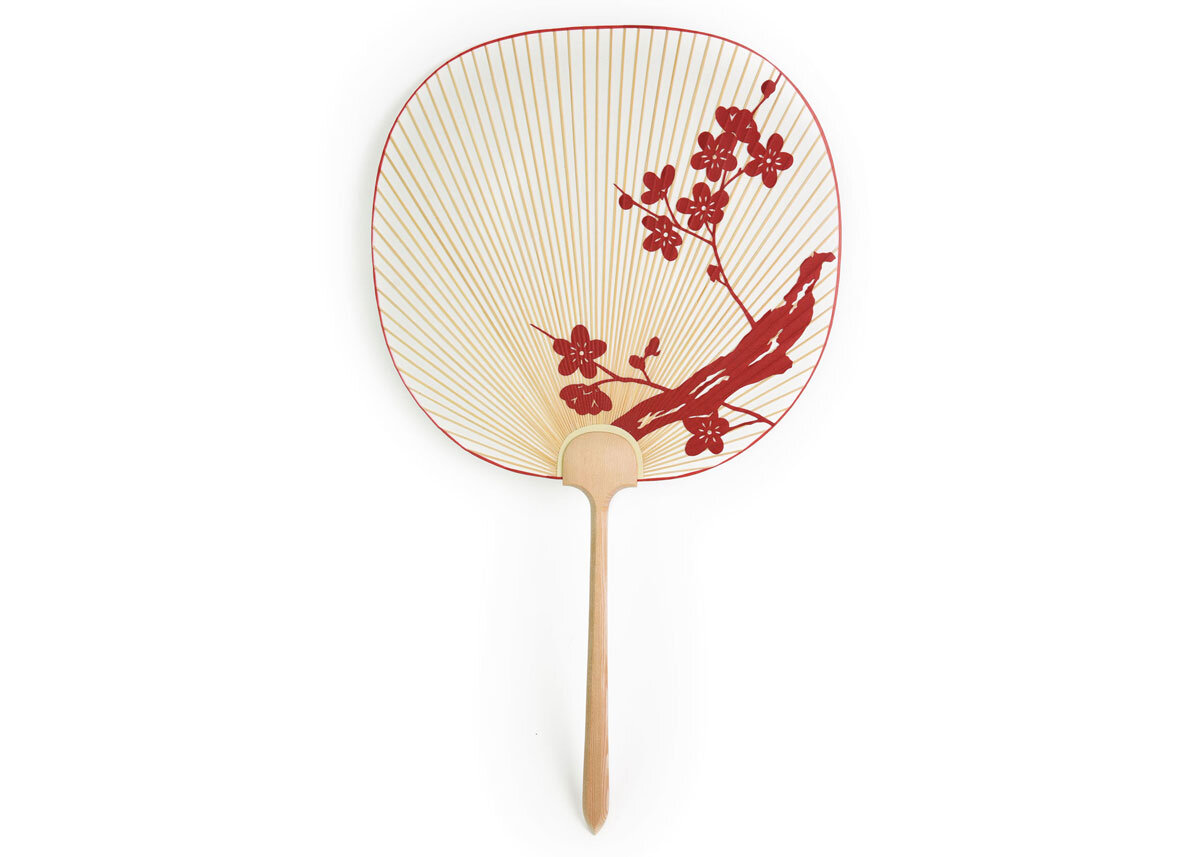
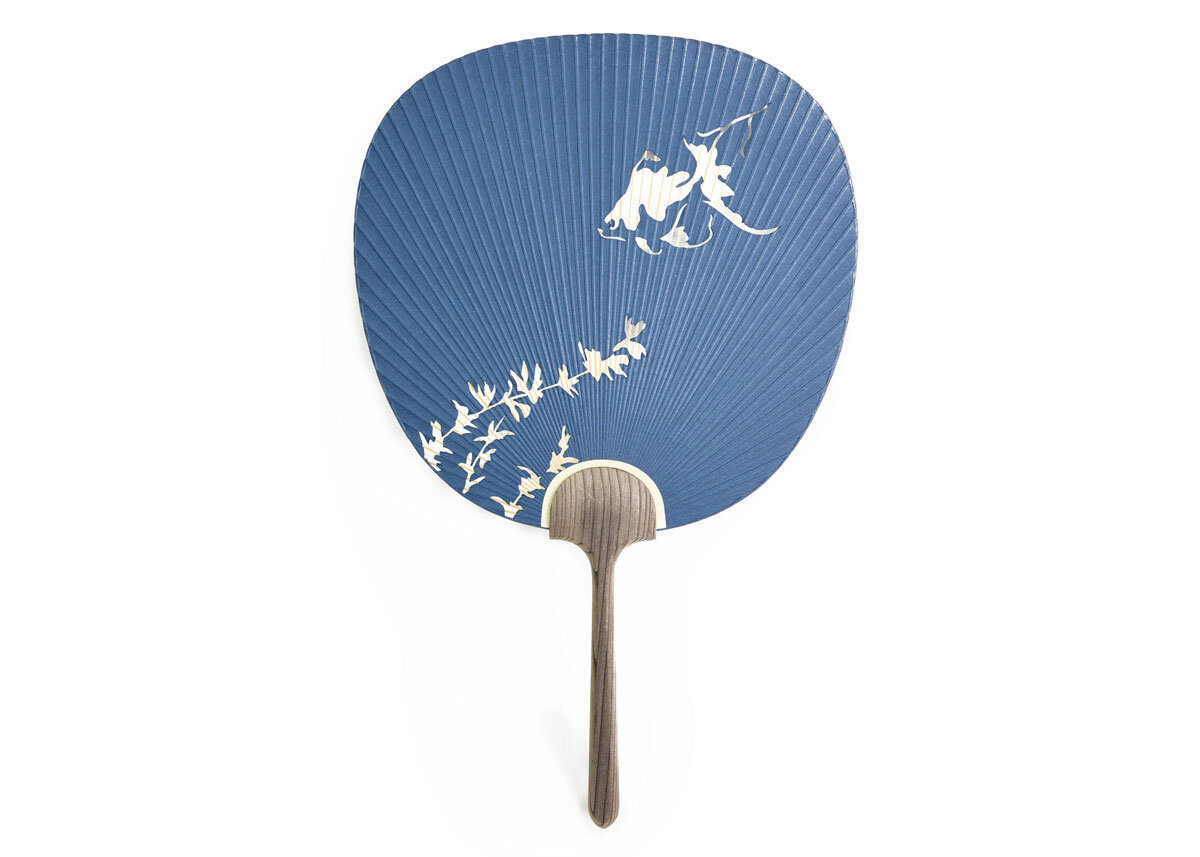












LIFESTYLE | July 28, 2023